
Microsoft word - pssa newsletter 3.4 final.doc
December 2006
me 3, Issue 4
Newsletter of the Physiology Society of Southern Africa (PSSA)
In this edition we continue with our focus on PSSA 2006. As the year
draws to an end, we wish you a restful vacation and look forward to a
perous and blessed new year.
Editorial team
• Th e Johnny van
der Walt poster competition winners
Inside contents:
Maritza Kruger 2
Fiona Baker 3
Ms Anna Chan winner of the Johnny van der
S. Abdool Karim 4
Walt poster competition PSSA 2006
uwa Mbagwa 5
It was an honor to receive the Johnny van der Walt Poster Award at the 34th PSSA
Congress held in Durban. I am very grateful for the recognition of my work by my
Positions available 7
peers and this motivates me to work even harder. I joined the Hatter Heart Research
Institute at the University of Cape Town 3 years ago. Here, I have had the
privilege to study a transgenic mouse model of obesity (db/db strain). I am firmly of the opinion that these studies are highly relevant since obesity and type II diabetes are major global burdens of disease in developing and developed nations. My hypothesis was that with type II diabetes and aging, increased myocardial lipid accumulation triggers apoptosis resulting in decreased mitochondrial ATP production. This interested me to understand and tackle the complexity of these diseases in an age-dependent manner. However, I could not do it without the help of my supervisor, Dr Faadiel Essop, with his excellent supervision and unlimited patience. I also wish to acknowledge Prof Lionel Opie for his guidance and all my colleagues at the Hatter Institute. My current study is very exciting. Here, I am investigating gender differences in obese mice and I am hoping to prove the myth that females are, at all times, more superior than males. I look forward to the next congress where we can further debate this important gender issue.
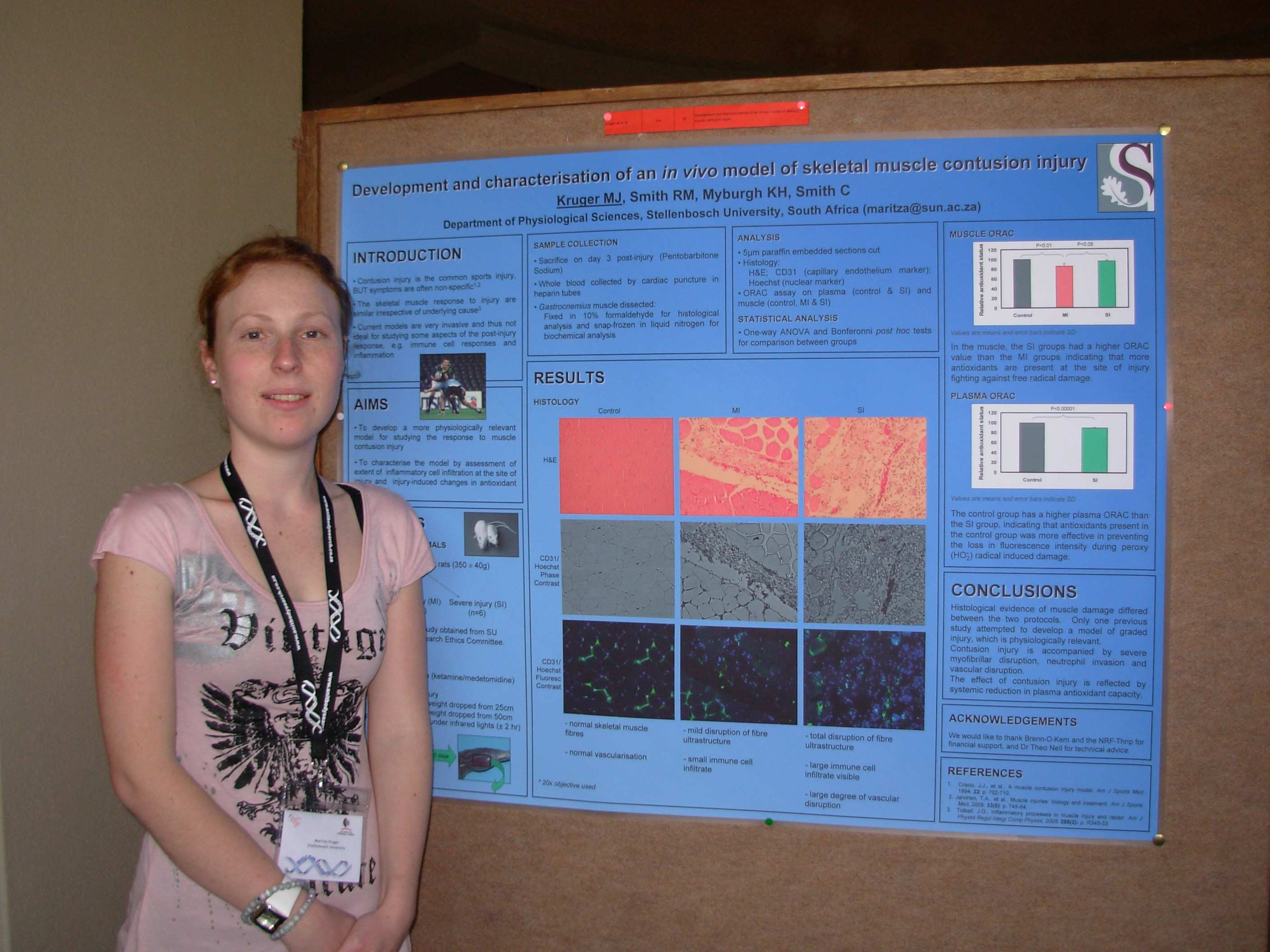
The Johnny van der Walt Competition
Runner up: Ms Maritza Kruger
Ms Maritza Kruger posing gallantly beside her poster
In h er own words;
"I graduated with a BSc (Human Life Sciences) from the Stellenbosch University in 2004. In
2005 I obtained my BSc (Hons) degree with a distinction in the department Physiological
Sciences also at SU, with Drs Jacques van Rooyen and Anna-Mart Engelbrecht as supervisors.
My work on my Hons project, the results of which was presented as a Wyndham entry in 2005,
has recently culminated in an international publication (Maritza J Kruger, Anna-Mart
Engelbrecht, Johan Esterhuyse, Eugene F du Toit and Jacques van Rooyen. Dietary Red Palm
Oil (RPO) reduces ischaemia/reperfusion injury in a hypercholesterolemic diet. British
Journal of Nutrition, accepted 2006). Currently, I am enrolled for a MSc (Physiological
Sciences) at the SU, with preliminary thesis title: The effect of grape seed extract
supplementation on oxidative stress and inflammation associated with skeletal muscle
contusion injury. I represented the university for a second time at the PSSA this year, where my
poster entitled; Development and characterisation of an in vivo model of skeletal muscle
contusion injury was awarded 2nd prize in the Johnny van der Walt poster competition. After my
MSc, I want to start with my PhD, and then hopefully a good job overseas will follow.
Thereafter, only time will tell what the future holds!"
Focus on Keynote speakers PSSA 2006
Dr Fiona Baker
S.R.I. International
Dr Fiona Baker (in the red top!)
I thoroughly enjoyed my recent visit to South Africa in September, where I had the opportunity to catch
up with colleagues and friends at Wits. I also had the honor of presenting some of my work at the PSSA
congress in Durban. Not having attended a PSSA congress since 2001, I was really looking forward to
participating and listening to the other speakers. The diverse range of topics covered by the speakers was
impressive and I appreciated learning about physiological concepts that were outside of my immediate
area of specialisation. Thank you to the organisers for putting together an excellent programme. I hope
that I will have the opportunity to attend another PSSA conference in the future!
Right now, I am working as a Research Scientist at SRI International, a non-profit research organisation
that is based close to San Francisco. I have been here for almost two years. I work in the Human Sleep
Research Program, which is directed by Dr Ian Colrain. Over the past year I have focused my attention
on investigating how sleep quality and daytime alertness are affected in women who suffer from severe
premenstrual syndrome. Major depressive disorder is often linked with sleep disturbances and I want to
see whether premenstrual depression is associated with similar disturbances. Other projects that we are
running in the sleep laboratory include: the impact of alcoholism and normal aging on sleep and brain
structure; the relationships between smoking cessation, sleep disturbance, and failure to quit; impact of
upper airway mechanics on EEG during wakefulness and sleep.
Fiona Baker, Ph.D. (SRI International ) Email: [email protected]
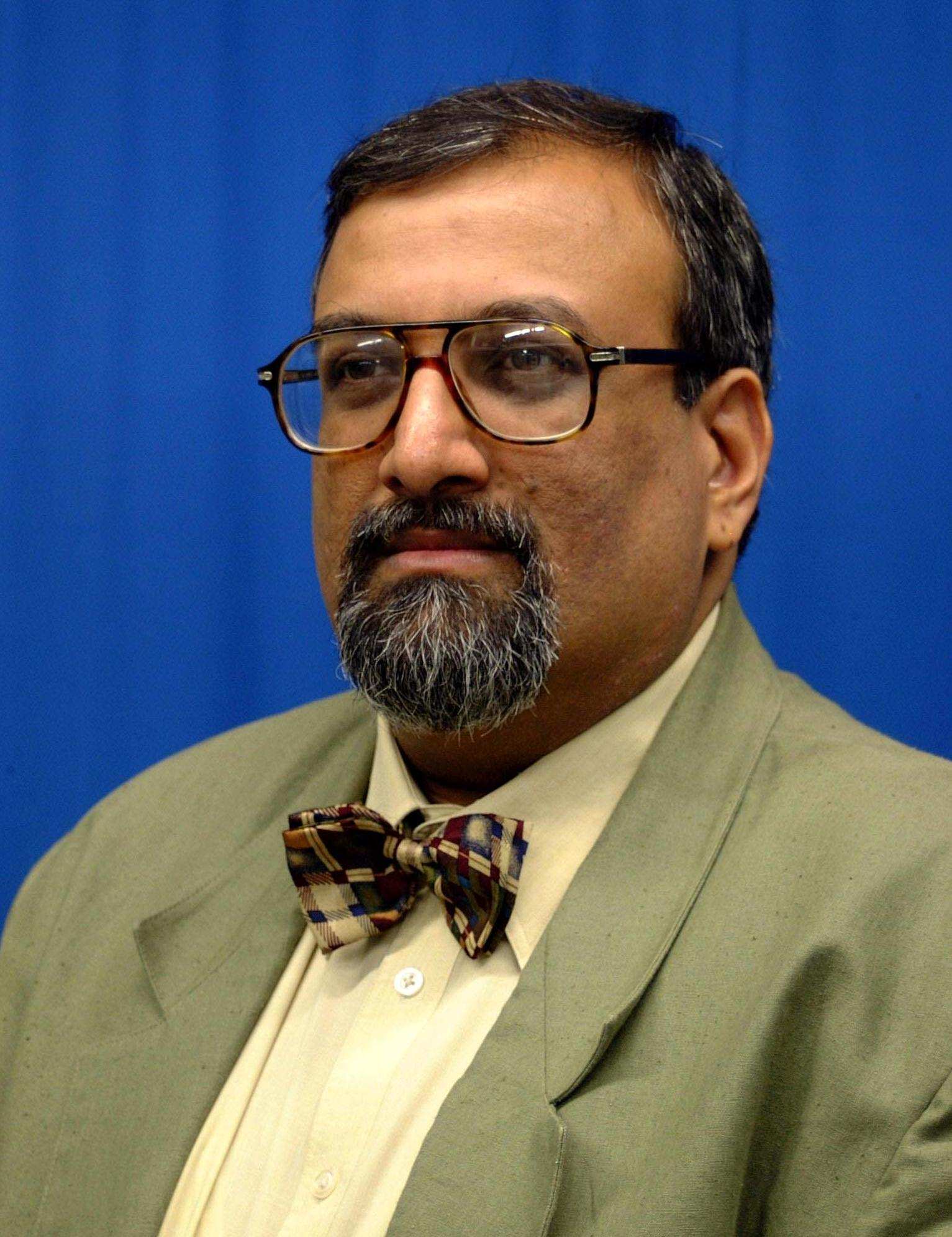
Focus on Keynote speakers PSSA 2006
Prof Salim S. Abdool Karim MBChB, PhD
Director: CAPRISA - Centre of AIDS Programme of Research in South
Africa, and Pro-Vice-Chancellor, University of KwaZulu-Natal, Professor in
Clinical Epidemiology, Columbia University, and Adjunct Professor of
Medicine, Cornell University.
Email: [email protected]
Immunological challenges in developing HIV vaccines
Worldwide th
ere are an estimated 38.6 million people living with HIV/AIDS and more than 20 million people have already
died of AIDS. More than 95% of all new HIV infections are i n developing countries, making HIV/AIDS among the most serious threats not only to global health, but to global development. It is now widely accepted that an effective, protectiveHIV vaccine would provide the best method for controlling the catastrophic HIV/AIDS pandemic, especially in countries
like South Africa.
A wid e variety of vaccine approaches are currently being pursued. For many years the vaccine pipeline was limited
to monomeric gp120 or gp160 proteins based on laboratory strains of the virus, different synthetic peptides and simple poxvirus-HIV
-1 recombinant vectors. The pipeline has recently expanded to include gp120 constructs based on clinical
isolates of HIV-1, conformational envelope antigens, recombinant adenoviral vectors expressing multiple HIV-1 genes,
different constructs of naked DNA vaccines, new live vectors, including the modified vaccinia Ankara (MVA), and the Venezuelan equine encephalitis virus replicon.
Designing a successful vaccine against HIV has been hampered by the lack of an immune correlate of protection, i.e.
it is not clear which type of immune response is needed to provide protection against HIV. Unfortunately, animal protection experiments and natural history studies have failed to produce conclusive results and no animal model proposed so far can adequately mimic human disease infection and disease progression.
Cellular immune responses - Cytotoxic T lymphocytes (CTL) are part of the cellular immune response and are
associated with control of viral replication. However, the failure of vaccinated or infected subjects to develop virus-specific proliferative responses is common. Current HIV candidates elicit reasonably potent cellular immune responses, but only low levels of neutralizing antibodies. Such CTL based vaccines (e.g. DNA vaccines) do not prevent infection, but may have a beneficial effect on disease course.
Humoral immune responses - Humoral (antibody-mediated) immunity refers to protection provided by antibodies
produced by B lymphocytes. Finding ways to induce the production of antibodies able to neutralize HIV has proved difficult mainly because HIV has the ability to mutate at a rapid rate and several clades of the virus exist.
Mucosal immune responses - In addition to cellular and humoral immunity responses, the stimulation of mucosal
immunity may also be necessary to achieve protection against HIV. The majority of HIV infections occur via mucosal routes and stimulating the mucous membranes that line the rectal and genital tract to induce mucosal immunity may be an essential requirement of an effective HIV vaccine.
Prime-boost strategy - One way to enhance immune responses to HIV, which is currently in vogue, is the
combination approach called prime-boost strategy. This strategy endeavours to get the immune system to make both neutralizing antibodies and to launch a strong cell–mediated response. The prime-boost method has shown promise in animal models and better protection has been achieved using this method than any other HIV vaccine strategy to date. This strategy has also being tested in human clinical phase I and II trials, where it has been found to be safe and effective.
Conclusion The HIV vaccine pipeline has many types of candidate vaccines being developed in parallel. Despite
significant advances in AIDS vaccine research, considerable challenges remain. The AIDS vaccine research field needs further efficacy trials to contribute to the understanding of potential correlates of protection. An AIDS vaccine remains an important hope for the control of HIV/AIDS, but its realisation is still several years away.
Focus on Keynote speakers PSSA 2006
Prof Kaniguwa Mbagwa
I was born in Bukavu, in the Belgian Congo (now D.R. Congo). I attended catholic elementary and secondary schools in and near Bukavu. During the last four years of secondary school I enjoyed very much studying Latin and a bit of Greek and philosophy. During the last four years of secondary school I enjoyed very much studying Latin and a bit of Greek and philosophy. After completing secondary school, I was admitted in the Medical Faculty, University of Lovanium, Kinshasa, which in the same year became the National University of Zaire.
I felt very comfortable with basic sciences and at different points in time thought of becoming either a biochemist or a physiologist. At the end of the medical studies, after some time of hesitation about undertaking a clinical specialization in Internal Medicine, I finally decided to go into Physiology. At that time there was only one qualified Congolese physiologist; thus there was a big need to promote training of basic scientists, who would later serve as Faculty. Thanks to the intervention of Prof. R. Borghgraef, a physiologist from the University of Leuven, Belgium, I was given a scholarship to go and train in the Department of Physiology of his University. In Leuven, I initially hesitated between training in kidney or cardiac physiology, but when visiting the laboratory of Prof. E. Carmeliet, a leading cardiac electrophysiologist, I was so nicely welcomed and impressed by his enthusiasm to explain methods and processes that I chose to work under his supervision. Moreover, at that time, electrocardiographic recording from isolated Langendorff-perfused hearts was among the techniques being used in his laboratory, which gave me the feeling that I would stay closer to Clinical Medicine. This was going to prove wrong, because the following years were going to see me dwell more and more into basic research, far away from clinical practice (although I would later return to part-time practice in Emergency Medicine). My supervisor was a very patient man, and tolerated that I spend a lot of time sitting on my desk, learning (I was eager to study such things as Thermodynamics or Electronics, and also took complementary Mathematics courses), instead of quickly producing publishable data. It took me five years to have my first paper published (fortunately in Circulation Research (11)) and six years to complete my PhD training. By present standards, you have to be a bad PhD student to spend such a long time on your thesis work! I think that the pressure to publish was not as high then as it is now; people still believed in "Non multa, sed multum" (i.e. quality before quantity). Despite the delay in publishing, the data of my thesis provided material for four additional papers, three of which went cover-to-cover into the still prestigious Journal of Physiology (London) (2-4). So, there I was, with my PhD degree, "fully" trained in Physiology! As for any young graduate, the question then was: what next? I hesitated between going back to Congo or get a position somewhere else. The economic and social situation in my home country had quickly deteriorated to a point that it was becoming impossible to live and raise a family (I had my wife and already three of my four children) on a normal income. This situation has become common to many African countries, leading to the "brain drain" of well-trained staff. Because my scholarship contract had stipulated that I should return to a developing country after training, I chose (it is good not to breach contracts!) to go back to Africa, but not to Congo. Of two offers of appointment, one from the University of Jos, Nigeria, and a second from the University of Zimbabwe, Harare, I chose the latter. This was going to be an excellent experience. Zimbabwe was flourishing at that time, and life was nice five year after the independence of the country. I was appointed as Lecturer in Department of Physiology, and taught Cardiovascular Physiology and part of Neurophysiology. It was a big challenge to be on my own feet. Being a Francophone, it was an additional challenge to be teaching in English. I survived these challenges and enjoyed the nice climate of Southern Africa, which is similar to that of my mountainous Kivu in Congo. Facilities in the laboratory in Harare allowed me to carry out some research, and we managed to publish three research papers (5, 10, 15) and one review in a three-year period. But I still wanted to do more research work than was possible in Harare, and decided to apply for a research fellowship in cardiac electrophysiology, advertised by Prof. A.J. Pappano, from Farmington, CT, USA. He
Continued overleaf
Focus on Prof Mbagwa continued fron page 5
had been working on the parasympathetic control of the heart, a field to which I had been introduced via my thesis work, and I had referred to his publications. Like many researchers, I was also attracted the idea of going to the big "Mecca" of science that are the USA. I got the job in Farmington! Thus, after completion of my contract in Harare, I returned to my electrophysiology "roots" and used this post-doctoral position with A.J. Pappano to learn the patch clamp technique. Among other topics, we studied the role of cyclic GMP in the regulation of the L-type Ca2+ current in cardiac myocytes (13). Although not from a nomadic African tribe, I behaved like a true nomad: I did not keep in place! Three years later, I was back in Leuven, Belgium, where a position of Scientific Associate was offered by Prof. W. Flameng for someone with Physiology training to work in his Centre for Experimental Surgery and Anaesthesiology. Interest in the laboratory was then to understand the mechanisms underlying ischemia-associated processes such as myocardial stunning and ischemic preconditioning. We used Langendorff-perfused hearts to study the role of the sarcoplasmic reticulum (9) and of the signaling via adenosine receptors (12) in stunning and preconditioning, respectively, and we also tested the cardioprotective action of inhibiting the Na+-H+ exchanger (8) . After a three year period in the Centre, I wandered where I was going to go then because I had become now used to moving every three years! Fortunately, a permanent position as "Docent" (Lecturer) became available in our Department and I was both very lucky and happy to get the appointment. Via this appointment, I think I became the first African to get an academic position in this 575 year-old University. The position gave me again an opportunity to develop my own research, supported since then almost exclusively by the F.W.O., the Flemish Foundation for Science. I decided to focus on the study of ion channels. Intrigued by the strange contractile behavior (sometimes good, other times bad!) of cardiac tissue that had been kept in cardioplegic solution (usually poor in Ca2+) before use, I decided to look at the effect of removing extracellular divalent cations (Ca2+ and Mg2+) on the cellular electrical activity. To my surprise, marked but reversible changes in the resting membrane potential and membrane permeability were induced by such an "unphysiological" intervention (14). We were certainly not the first ones to see such marked changes in membrane permeability in Ca2+- and Mg2+-free solutions, but most previous researchers had considered them to be necessarily irreversible (probably because they could not avoid the subsequent cell damage caused by the so-called "Ca2+ paradox"). In addition, we provided evidence that the permeability changes were not only due to monovalent cation permeation through voltage-dependent Ca2+ channels (which were already known to became permeable to monovalent cations upon removal of extracellular divalent cations), but that an additional pathway, very probably another channel type, was involved. We have since then carried out more work to characterize this novel pathway. In the absence of extracellular divalent cations, both the L-type Ca2+ and the novel channels become highly permeable to monovalent cations, allowing Na+ to accumulate into the cell (1). Upon readmitting Ca2+, there is intracellular Ca2+ overload via Na+-Ca2+ exchange, leading to cell death. We were lucky to have used room temperature and short exposures to Ca2+- and Mg2+-free solutions in our experiments. Our recent data indicate that, whereas, like Ca2+ channels, the novel channel is permeable to monovalent cations in the absence of extracellular divalent cations, it allows entry of cations such as Mg2+ and Ca2+ when these are present (6, 7). Other properties of this pathway have allowed us to propose that it is identical with the TRPM7 channel, identified as a major pathway for Mg2+ entry into cells. Our present research is now focused on studying the regulation of this pathway and the attendant changes of intracellular Mg2+ homeostasis in disease conditions such as heart failure, ventricular hypertrophy or arterial hypertension.
Beside my research work, I also teach Cardiovascular and Renal Physiology to Biomedical students. In addition, despite residing in Europe, I have been returning regularly to the D.R. Congo since 1992 for assistance in Physiology and Pathophysiology teaching to medical students. As recent studies indicate, the unavoidable "brain drained" diaspora of African scientists should not always be seen in a negative way, but should be put to use to help develop their continent. My hope is that with more political and social stability on the continent, we can help develop a good science base. The advancement of science in Africa is a necessary condition for survival, in freedom and dignity, in this technology- and productivity-based competitive world. A strong scientific base should also allow that priority be given to solving problems that are specific or more prevalent (e.g. AIDS and tropical diseases) on the continent. In this
Focus on Prof Mbagwa continued fron page 6
respect, countries that are already well equipped in science infrastructure such as South Africa could serve as leading motor for the other African nations, via regional programs, student exchange, collaborative research work, etc. The Physiological Society of Southern Africa is certainly one of these instruments to promote science on the continent.
Bosteels S, Matejovic P, Flameng W, and Mubagwa K. Sodium influx via a non-selective
pathway activated by the removal of extracellular divalent cations: possible role in the calcium
paradox. Cardiovasc Res 43: 417-425, 1999.
Carmeliet E and Mubagwa K. Changes by acetylcholine of membrane currents in rabbit cardiac
Purkinje fibres. J Physiol 371: 201-217, 1986.
Carmeliet E and Mubagwa K. Characterization of the acetylcholine-induced potassium current in
rabbit cardiac Purkinje fibres. J Physiol 371: 219-237, 1986.
Carmeliet E and Mubagwa K. Desensitization of the acetylcholine-induced increase of potassium
conductance in rabbit cardiac Purkinje fibres. J Physiol 371: 239-255, 1986.
Dondo F and Mubagwa K. Chloroquine interacts with muscarinic receptors and inhibits cholinergic
effects in the heart. Afr J Med Med Sci 19: 237-243, 1990.
Gwanyanya A, Amuzescu B, Zakharov SI, Macianskiene R, Sipido KR, Bolotina VM,
Vereecke J, and Mubagwa K. Magnesium-inhibited, TRPM6/7-like channel in cardiac myocytes:
permeation of divalent cations and pH-mediated regulation. J Physiol 559: 761-776, 2004.
Gwanyanya A, Sipido KR, Vereecke J, and Mubagwa K. ATP and PIP2 dependence of the
magnesium-inhibited, TRPM7-like cation channel in cardiac myocytes. Am J Physiol Cell Physiol
291: C627-635, 2006.
Hendrikx M, Mubagwa K, Verdonck F, Overloop K, Van Hecke P, Vanstapel F, Van Lommel
A, Verbeken E, Lauweryns J, and Flameng W. New Na(+)-H+ exchange inhibitor HOE 694
improves postischemic function and high-energy phosphate resynthesis and reduces Ca2+ overload
in isolated perfused rabbit heart. Circulation 89: 2787-2798, 1994.
Mubagwa K. Sarcoplasmic reticulum function during myocardial ischaemia and reperfusion.
Cardiovasc Res 30: 166-175, 1995.
Mubagwa K and Adler J. Muscarinic antagonist action of clinical doses of chloroquine in healthy
volunteers. J Auton Nerv Syst 24: 147-155, 1988.
Mubagwa K and Carmeliet E. Effects of acetylcholine on electrophysiological properties of rabbit
cardiac Purkinje fibers. Circ Res 53: 740-751, 1983.
Mubagwa K and Flameng W. Adenosine, adenosine receptors and myocardial protection: an
updated overview. Cardiovasc Res 52: 25-39, 2001.
Mubagwa K, Shirayama T, Moreau M, and Pappano AJ. Effects of PDE inhibitors and carbachol
on the L-type Ca current in guinea pig ventricular myocytes. Am J Physiol 265: H1353-1363, 1993.
Mubagwa K, Stengl M, and Flameng W. Extracellular divalent cations block a cation non-
selective conductance unrelated to calcium channels in rat cardiac muscle. J Physiol 502 (Pt 2): 235-
247, 1997.
Mubagwa K, Wagaine-Twabwe D, and Matimba N. Intracellular concentrations and ouabain-
induced fluxes of sodium and potassium in erythrocytes of normotensive Zimbabweans. Cent Afr J
Med 37: 114-120, 1991.
PSSA CONGRESS 2007
Watch out for details of
- keynote speakers
- exciting extramural activities
Details to be sent out in January 2007
POSITIONS AVAILABLE
POSITION FOR MASTERS STUDENT AT DEPT MEDICAL PHYSIOLOGY, TYGERBERG
A position for a Masters student in medical physiology is available for the period 2007-2008 at
the Dept Medical Physiology, Faculty Health Sciences, Stellenbosch University (Tygerberg
Campus). The student will form part of a research project investigating the role of nitric oxide
during hypoxia in the heart. Isolated cardiomyocytes and cultured cardiac endothelial cells will be
studied. The student will get to know several exciting techniques such as flow cytometry, live-cell
microscopy, Western blotting, etc. and will be trained to do cell culture work as well as myocyte
isolation from rat hearts. Funding / bursary available. Please contact Dr Hans Strijdom as soon
as possible on [email protected] or cell: 0834445366. Student to start at end of January 2007.
POSITION(S) FOR MASTERS STUDENT IN MALE REPRODUCTIVE PHYSIOLOGY -
TYGERBERG
A position for a Masters student in medical physiology is available for the period 2007-2008 at
the Division of Medical Physiology in the Department of Biomedical Sciences, Faculty of Health
Sciences (Tygerberg Campus), University of Stellenbosch. The student(s) will form part of a
research project investigating the role of ROS, RNS, glucose, insulin and leptin on the motility
and viability of human spermatozoa. NRF grant holders bursaries are available. Please contact
Dr Stefan du Plessis as soon as possible on [email protected] or tel: 021-9389388 or cell:
083 356 9017. Student(s) to start at end of January 2007.
OPPORTUNITY FOR MASTERS STUDENT IN THE CARDIOVASCULAR RESEARCH GROUP
– TYGERBERG CAMPUS, UNIVERSITY OF STELLENBOSCH
There is an opportunity for a Masters student to perform a study with the Cardiovascular
Research Group in the Division of Medical Physiology at the Faculty of Health Sciences,
Tygerberg during 2007-2008.
A National Research Foundation grant holders bursary is available for an MSc student who will
be involved in a project investigating the mechanisms responsible for the adverse effects of the
metabolic syndrome in the normoxic and ischaemic heart. For more information, please contact
Dr Joss du Toit at [email protected] or by phone: 021 938 9613 cell: 083 6944 671.
Faculty of Health Sciences, Doornfontein Campus, University of Johannesburg
Department of Anatomy and Physiology
Lecturer: Physiology
Post description: Teach physiology as well as fundamental aspects of gross anatomy and histology to
undergraduate students Participate in all academic and administrative activities of the department
Conduct research
Requirements: A masters in physiology or equivalent At least 3 years research and/or teaching
experience
Recommendations: Current registration for a further qualification in Physiology would be a strong
recommendation A teaching qualification would be preferred
Assumption of duties: As soon as possible
Enquiries: Mrs S Eagleton, Tel.: (011) 406 2462/8
UNIVERSITY OF CAPE TOWN
LECTURER/SENIOR LECTURER IN PHYSIOLOGY
Two Positions
DEPARTMENT OF HUMAN BIOLOGY
We invite applications for two full time positions for appointment as soon as possible in 2007.
The Department of Human Biology is a large multidisciplinary department carrying out teaching and
research in aspects of the anatomical and physiological sciences, neuroscience, cell biology, biomedical
engineering and sports sciences.
Applicants should have a PhD in the biological or health sciences, or an MBChB with an appropriate
postgraduate qualification. Post-doctoral experience would be an advantage. The successful candidate
will be located on the Health Sciences campus and will be expected to teach physiology, conduct
research and to provide academic leadership in their area of expertise. The department contributes to the
undergraduate teaching of the MBChB, physiotherapy, occupational therapy, communication sciences
and BSc courses and offers a major in physiology. The appointee will be expected to become involved in
undergraduate teaching in one of the above courses, and where appropriate, contribute to honours and
postgraduate supervision. New staff will be required to participate in programmes designed for new
teaching and research staff.
The annual remuneration packages include benefits and appointment will be made at one of the following
levels: Lecturer: R257 103 : Senior Lecturer: R315 536 (Salaries for 2007 are under review)
Please send: a letter of motivation, clearly stating the post level you are applying for, your full CV
(no certificates) plus a 1-page condensed CV, and email/telephone details of 3 contactable
referees, to:
Mrs F Nhliziyo (Ref: 1286), Staff Recruitment & Selection, University of Cape Town, Rondebosch,
South Africa 7701 by 15 January 2007. Telephone: (021) 650-3003 email:
[email protected]; website: www.uct.ac.za
We are committed to equity in our employment practices. It is our intention to appoint individuals with the aim of meeting our equity objectives.
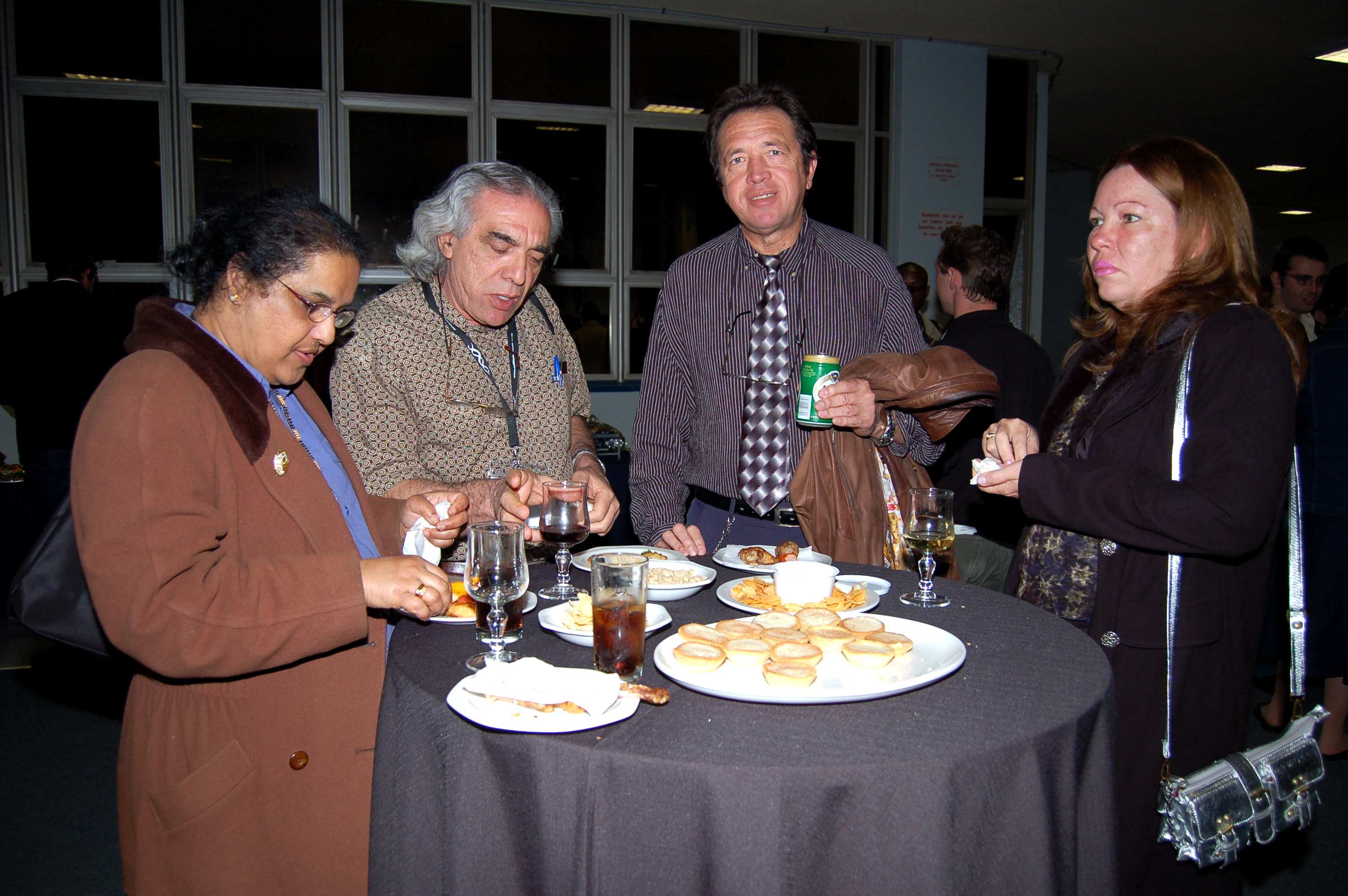
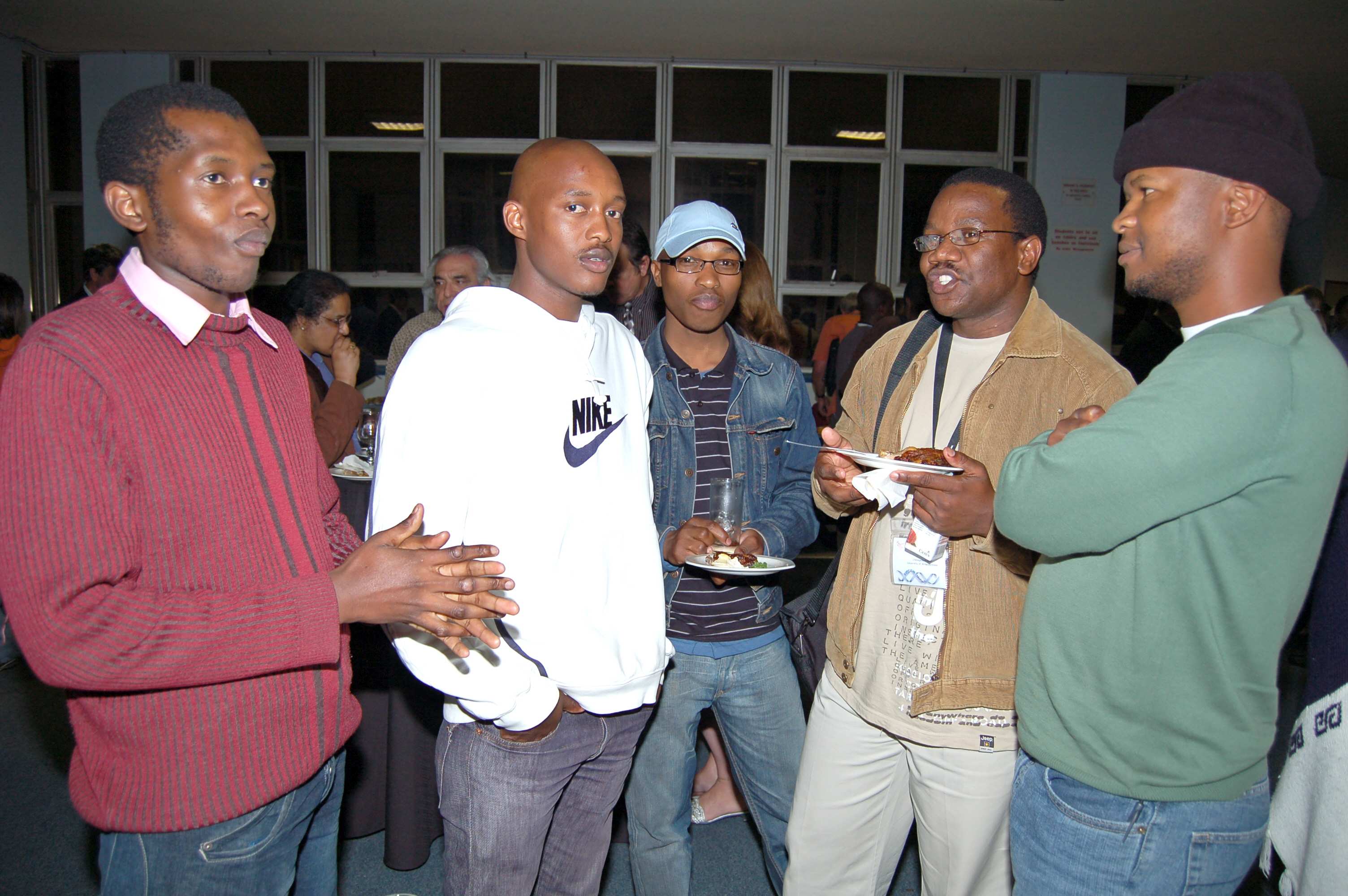
PSSA 2006 NOT JUST FOOD FOR THE MIND
Dr Mammen, Prof Vicedo and colleagues from Walter Sisulu University
Hola magents! Some of the more youthful members of the PSSA "chilling out"
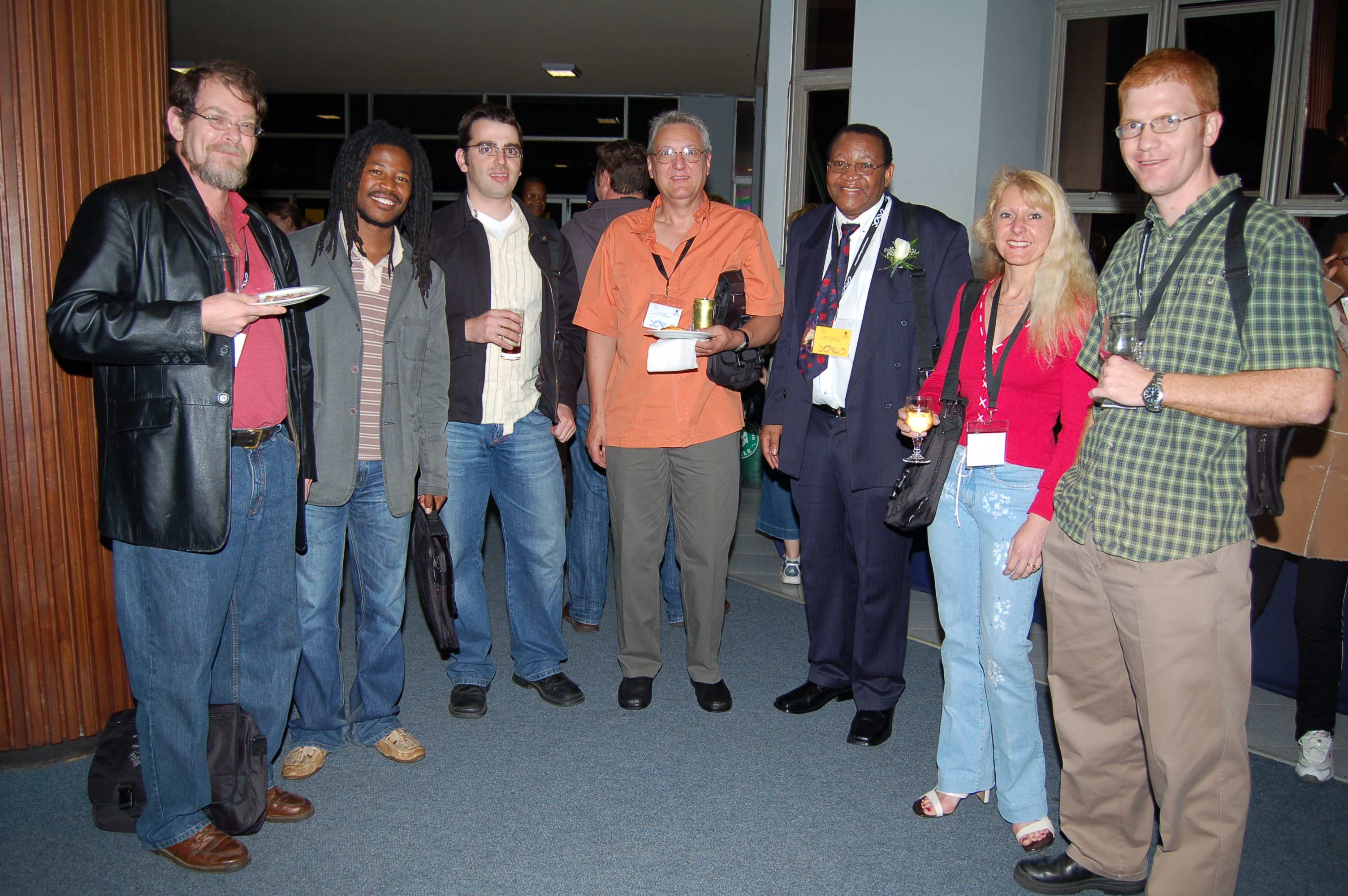
*Dr Kenne dy Erlwanger
Students can bring some humour into the mundane task of marking
assignments, tests and exams. A couple of examples from exam
scripts follow.
flaes @puk.ac.za
Q. Describe a test you could use to distinguish between
*Dr Andrea Fuller
conduction deafness and neural deafness
physiology.wits.ac.za
A1. The Rhine test: bang a steel rod and place it on the jaw bone and
then put it into the eardrum.
* School of Physiology,
A2. The Rinne test: put a fork in the ear
# School of Physiology,
Q. List some examples of when the valsalva manouvre is used.
nutrition and consumer
A1. Jumping into the sea from an altitude.
A2. When someone is choking, squeeze their chest.
Please send any of the editorial team some of the gems you pick
up as you mark over the next couple of weeks.
medph ys/pssa.htm
Some PSSA 2006 participants enjoying fruit juice (presumably well-
PHYSIOLOGY SOCIETY
fermented!) after registering for the evening session on opening day.
OF SOUTHERN AFRICA
PHYSIOLOGY SOCIETY OF SOUTHERN AFRICA
From left: Prof G. Norton, Dr S. Makaula, Dr D. Veliotes, Prof B. Davidson, Prof C. Musabayane (PSSA vice president 2005-2006), Prof A. Woodiwiss & Dr P. Kamerman (PSSA vice president 2006-2007)
Source: http://physiolsoc.org.za/wp-content/uploads/2015/01/vol3no4.pdf
Colchicine Site Competitive Assay Kit CytoDYNAMIX Screen 15 ORDERING INFORMATION To order by phone: (303) - 322 - 2254 To order by Fax: (303) - 322 - 2257 To order by e-mail: [email protected] Technical assistance: (303) - 322 - 2254
RALEIGH DISABILITY DETERMINATION SERVICES PSYCHOLOGICAL EVALUATION CLAIMANT: DOE, JONATHAN CLAIMANT#: 156332 DATE SEEN: 10/12/2010 EXAMINER: Dr. Ken Smith 100 Main Street Cary, North Carolina 27518 ADJUDICATOR: CLARK MILLER ARRIVAL INFORMATION:The claimant arrived early for his scheduled appointment at 10:00 AM on Tuesday, October 12, 2010.Jonathan arrived for the appointment by bus. The claimant does not have a driver's license. Jonathanshowed the examiner his North Carolina photo I.D. card. He stated he has never had a driver license inthe past. Jonathan's group home manager was supposed to accompany the claimant on his bus trip tothe office, but a last minute scheduling change forced Jonathan to get on the bus alone today. Given theclaimant's poor performance and unstable presentation during the interview, the examiner accompaniedthe claimant out of the office at the end of the session. Assistance was provided in crossing the streetand helping the claimant get on the city bus. The bus driver was alerted that this man may needassistance in getting off at his destination. The claimant was unable to provide an estimate of travel toreach the office today. The claimant was given total assistance by office staff in completing thecomputerized intake process. Jonathan stated that he does not know how to use computers. Althoughhe has access to a computer in the group home where he resides, he has never used the system.









